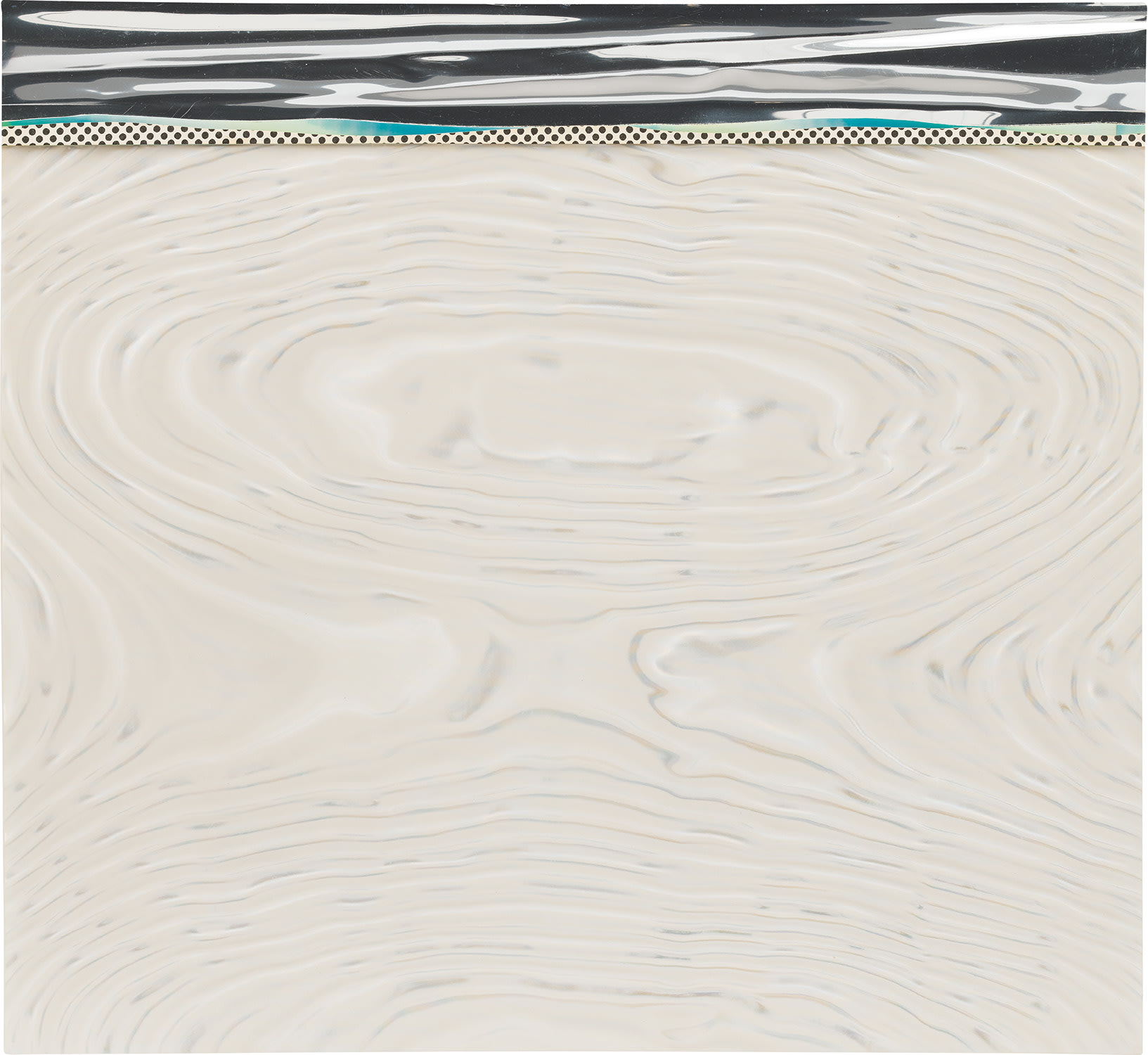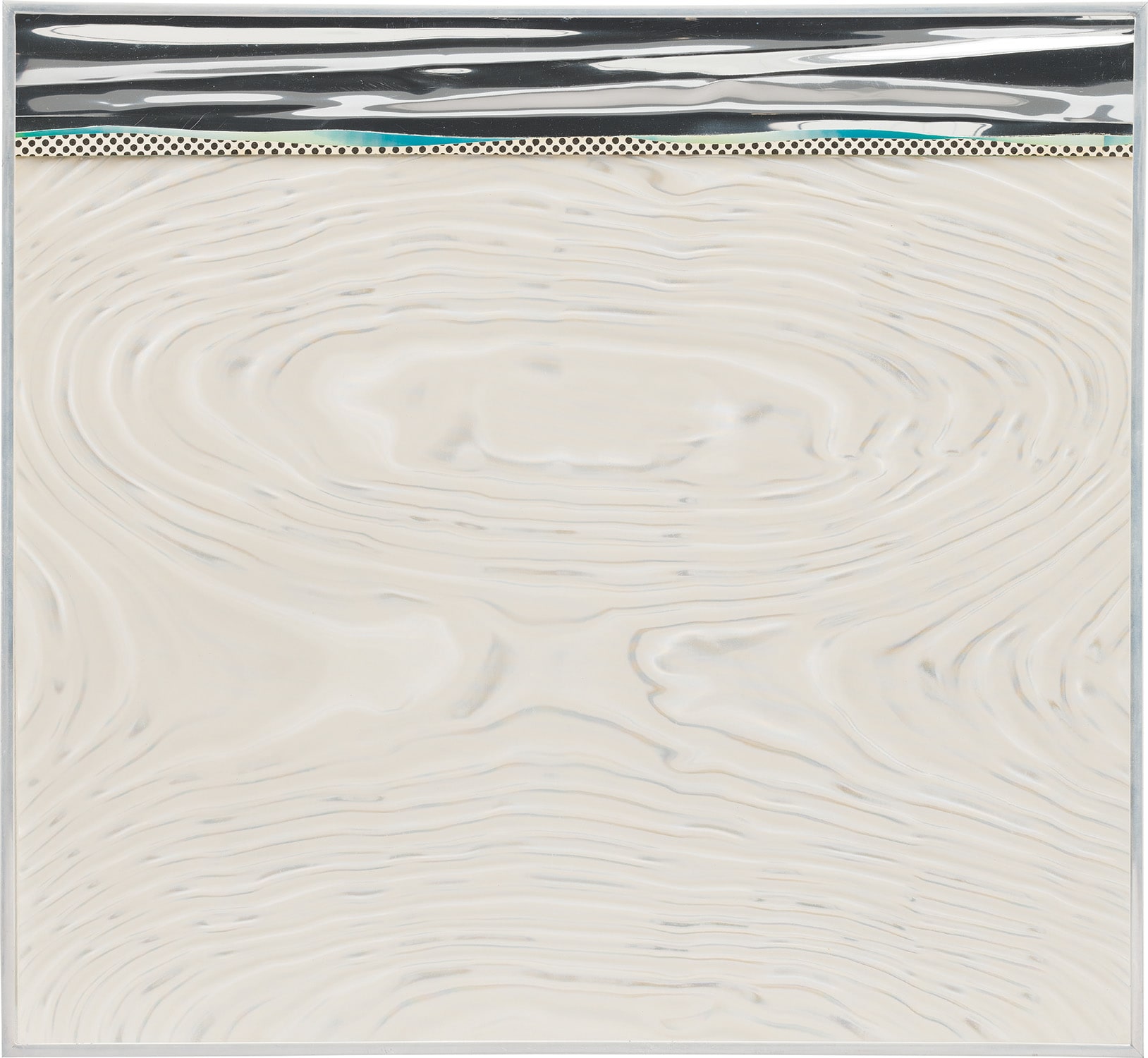



Property of a Lady
187
Roy Lichtenstein
Seascape #16
signed and dated 'rf Lichtenstein '66' on the reverse
Rowlux, Mylar and cut-and-pasted printed paper on board, originally with motorised lamp
56 x 61 cm. (22 x 24 in.)
Executed in 1966.